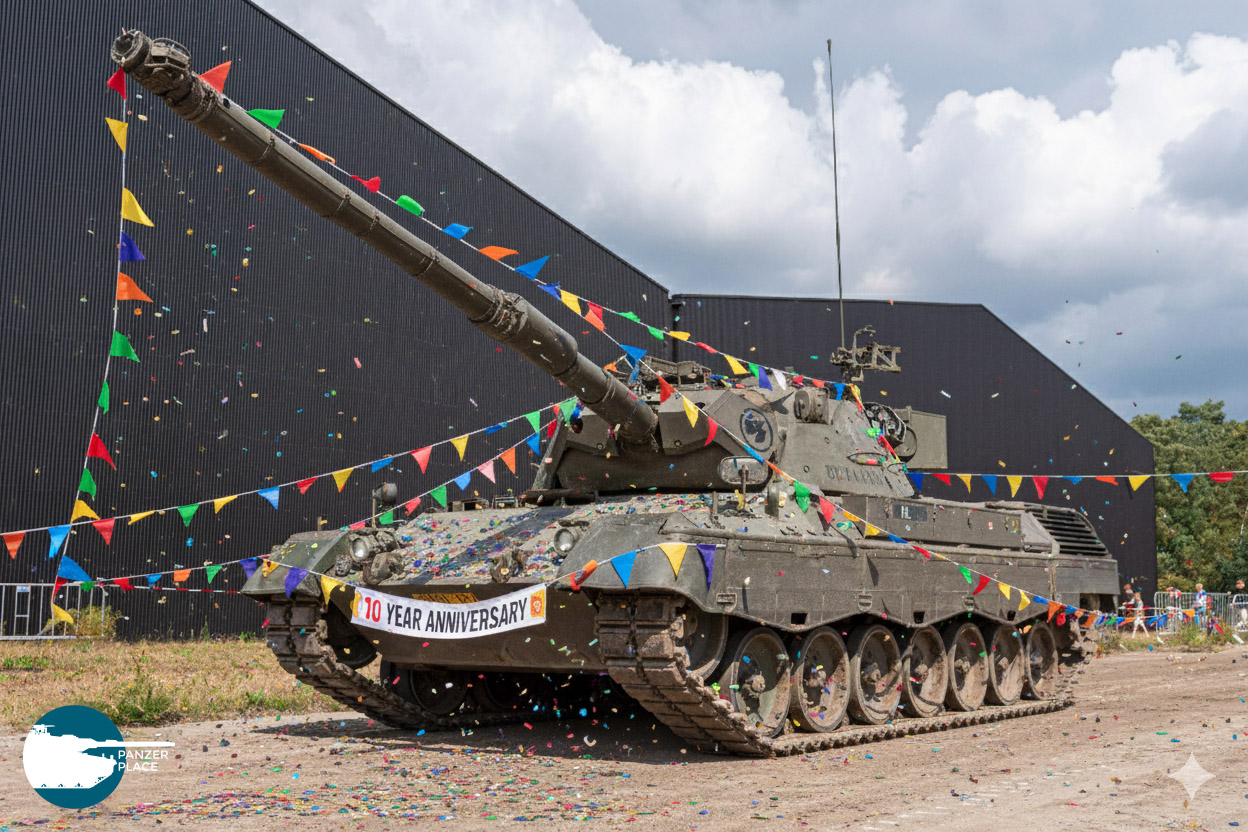In the last week of February a new exhibition was opened in the Nationaal Militair Museum, Soest, The Netherlands. This exhibition, dubbed “When the Russians come”, is dedicated to the Cold War and tells the tale of rivalry between the US and the Soviet Union as well as the tense situation in Europe that resulted. An audio tour leads the visitors along exhibits of various sizes that each tell a story about the events of the Cold War. The museum really got out of its way to piece together a great collection of unique and fascinating objects for this exhibition – even a Chieftain tanks was shipped over from Bovington. Among the exhibits was also an original Polish attack map shows what a full-out Soviet attack would have looked like. In the case of an attack, it was planned that no less than 17 tactical nuclear missiles would be launched.
Both the US and Soviet Union deployed a range of mobile ballistic missile vehicles which could deliver (unguided) ballistic missiles carrying nuclear or traditional payloads. An example of a Soviet missile launcher is in the museum’s armoury on lone from the Gunfire museum in Brasschaat, Belgium. In the west, Soviet missile launcher systems are best known by their NATO designation Free Rocket Over Ground (FROG), which was a name given to all Soviet unguided rocket systems. This particular vehicle is, according to NATO, the seventh generation and hence named FROG-7. In Russia this system was called Луна-М (Luna-M or Moon). Besides its name, the Luna-M has separate designations for: the overall system (9K52), the rocket itself (9M21) as well as the transporter erector launcher vehicle (9P113) hence you will find many different names referring to essentially the same thing [1]. The Luna-M first entered service in 1965 to replace outdated systems [2].
This massive mobile artillery truck is based on the 8×8 prime mover Автомобильное Шасси 135ЛМ (Automobile Chassis 135LM) better known as ЗиЛ-135. The Russian prefix reads “ZiL” which is the name of the original designer and manufacturer of said chassis; Zavod imeni Lichačeva (Factory called Lichačeva). The specific type of the chassis used for the Luna-M was the 135LM variant. After many failed variants of the Automobile Chassis 135, ZiL designed the 135L. Production of the 135 was to start at the Bryansk Automobile Factory (BAZ) near Moscow in 1962, but it became clear that production of the automatic transmission originally planned for the 135L was not possible. Instead of installing the automatic transmission a manual one was fitted and the ‘M’ for manual was suffixed, creating the 135LM [3]. The ZIL-135 has a very unusual appearance with its low cab which seats the driver and two passengers. The two ZiL engines are housed in the compartment directly behind the cab. Each of the engines powers the axels on one side of the vehicle.
By adding a launch track as well as a hoist, the ZiL-135 chassis was transformed to the 9P113 Transporter Erector Launcher (TEL). To stabilise the vehicle when firing a total of four stabilising jacks could be lowered (the front pads are located between the first and second axles and clearly visible from the side). A blast shield is installed in front of the cab which would be raised when firing, to protect the occupants.A total of 750 Luna-M TELs were constructed at BAZ of which 380 were exported to Warsaw Pact countries [2].
The Luna-M carries an unguided 9K21 artillery rocket which is spin stabilised and could be equipped with four types of warhead among which were a nuclear and biological variant [1]. Its effective range is between 15 to 65 kilometres and has a less than impressive accuracy of 500 to 700 metres [2]. It should be noted that the rocket as seen in the museum has speed brakes fitted (semi-circular flaps at the end of the main tube) which allows the rocket to be fired over short distances.
References
- [1]Z. Steven, The Scud. Concord Publications Co, 2000.
- [2]J. Livesey, The Illustrated Guide to Armoured Fighting Vehicles of the World. Hermes House, 2006.
- [3]“ЗиЛ 135Л / 135ЛМ (Военные модели),” Trucksplanet. [Online]. Available: https://trucksplanet.com/ru/catalog/model.php?id=2239. [Accessed: 11-Mar-2019]
























Leave a Reply